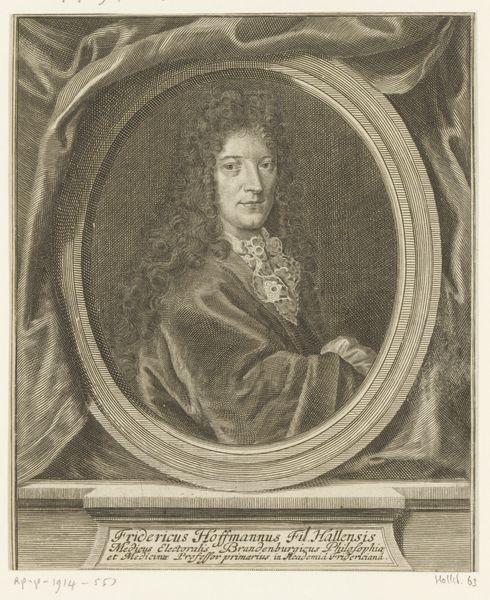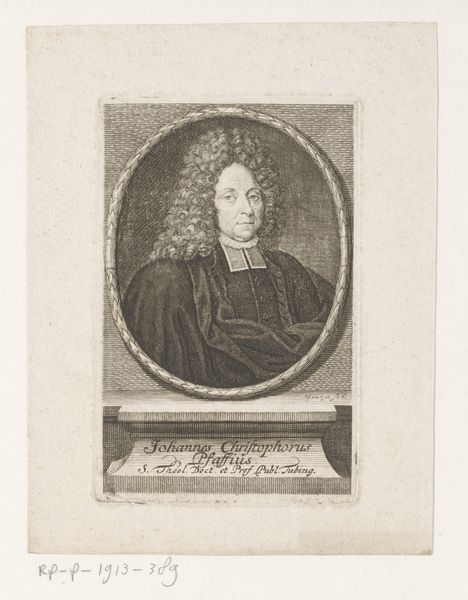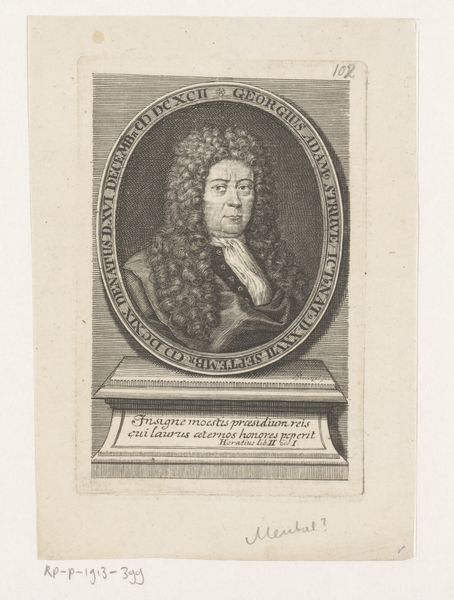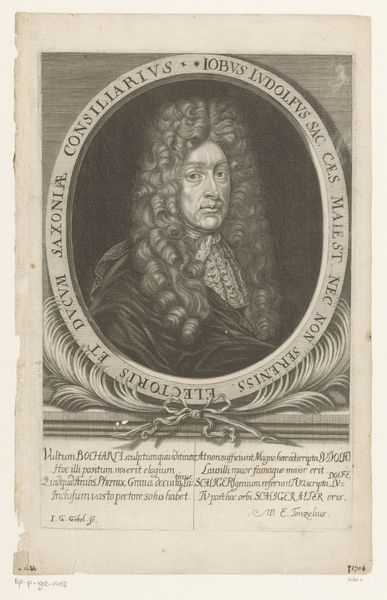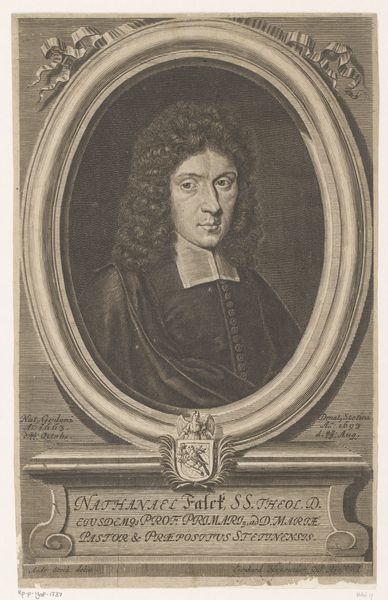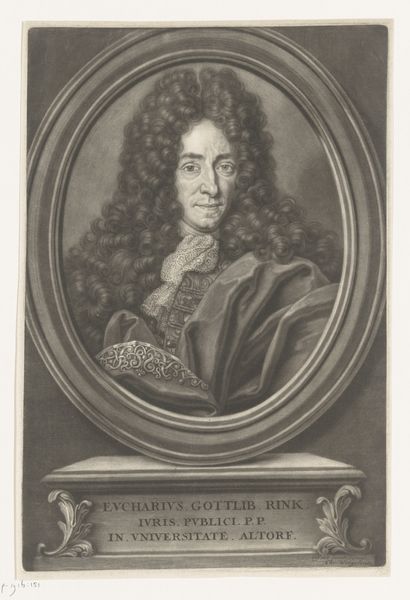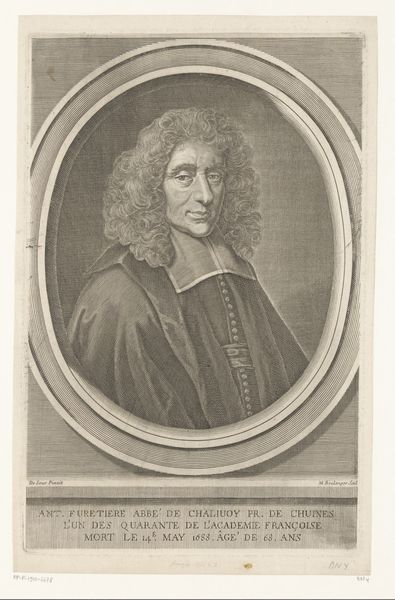
Dimensions: height 163 mm, width 95 mm
Copyright: Rijks Museum: Open Domain
Johann Friedrich Schleuen created this print of Justus Henning Böhmer, a prominent German jurist, likely in the late 18th century. The portrait itself is conventional for its time, presenting Böhmer in a formal, almost classical style, complete with an elaborate wig and draped robe. The oval frame and the stone plinth evoke a sense of established authority and intellectual stature. But, let's consider the context: Germany at this time was a patchwork of states, each with its own legal and academic traditions. Figures like Böhmer were central to shaping legal thought and, by extension, social norms. Prints like these served to disseminate images of important figures, solidifying their place in the public consciousness and creating a visual culture of authority. To understand the full impact, we might look into archives of legal publications or university records, tracing Böhmer's influence and the ways his image was used to promote certain ideas. Art is always embedded in a web of social and institutional relations, and the historian’s job is to unpack those connections.
Comments
No comments
Be the first to comment and join the conversation on the ultimate creative platform.
